Yellowstone is the USA’s first national park and arguably its best. The 2.2 million acre park sits on top of a volcano, resulting in an extremely varied geothermal landscape. Although the last major eruption was over 600,000 years ago, the volcano is still very active. The pressure and heat that build up underground are released through geysers, the most famous being Old Faithful.
Other dramatic features in the park include waterfalls, prismatic pools, travertine cliffs, and bubbling mudpots. This diverse terrain is home to large numbers of bison, elk, moose, bears, and mountain goats. You will want plenty of time to see it all. The following itinerary shows you how to spend 3 days in Yellowstone National Park. But you could easily spend 4 or 5 days exploring all its nooks and crannies, especially if you enjoy hiking.
Day 1
Upper Geyser Basin
The best place to kick off your 3 days in Yellowstone is the Upper Geyser Basin. This area of the park is home to the largest concentration of geysers in the world. Six of these geysers erupt on a predictable schedule, so stop by the visitor’s center first to check the times.
Just behind the visitor’s center is Old Faithful, which shoots a plume of water and steam into the sky every 90 minutes or so. Eruptions are dependable but brief, lasting just a few minutes, so don’t dawdle. There is a wide wooden platform surrounding Old Faithful with bench seating, making it one of the most accessible spots in Yellowstone.
Follow the platform around to the backside of Old Faithful to join the Upper Geyser Basin trail. This raised wooden boardwalk makes a 3-mile loop around the park’s most active hydrothermal features. These include steaming hot springs in a variety of hues. The most brilliantly colored is the Morning Glory Pool at the far end of the loop.
Several of the main geysers were predicted to erupt around the same time during my visit, so I opted to sit and wait for the Grand Geyser, which goes off just once or twice a day. This fountain geyser is one of the park’s star performers, ejecting water in bursts that can reach 200 feet high and for as long as 10 minutes.
But even if you miss all the scheduled eruptions, there is still plenty of action here. A multitude of geysers boil and spray constantly. Others vent at random intervals and you might get lucky. The Lion Geyser suddenly started gushing as I walked by and I overheard a park ranger excitedly exclaim that she’d never seen that one erupt before. Plan to spend several hours exploring the Upper Geyser Basin.
West Thumb Geyser Basin
30 minutes east of Old Faithful, the West Thumb Geyser Basin sits on the scenic shore of Lake Yellowstone. This vast body of water has some rather unique underwater thermal features. The Fishing Cone is a now defunct geyser that was once so hot early explorers reportedly used it to cook the fish they caught in the lake. Nearby, the Abyss Pool reaches a depth of 53 feet and is filled with water so clear it reflects the sky. A wooden boardwalk loops for one mile around West Thumb Geyser Basin, with benches along the lake so that you can sit and enjoy the view. Fishing is no longer allowed.
Day 2
Midway Geyser Basin
The most stunning attraction in Yellowstone is the Grand Prismatic Spring. Longer than a football field, this hot spring is the third largest in the world. Bacteria thrive in the 160F degree water, creating vivid mats around the 120-foot deep spring. Steam often rolls across the surface, creating a dramatic effect.
To fully appreciate its size and colorful appearance, trek up to the Grand Prismatic Spring overlook. The path leading to the overlook branches off from the Fairy Falls trailhead. It’s a one-mile hike from the parking lot with a moderately steep climb. But the birds-eye view is totally worth it.
From the overlook, continue along the trail to Fairy Falls. This is one of the tallest waterfalls in Yellowstone, with a drop of nearly 200 feet. It’s about 6 miles roundtrip from the parking lot to the falls and back, including the detour to the Grand Prismatic Spring overlook. The path leads through a forest, though many of the trees were burned by a wildfire in the 1980s, so there isn’t much shade. Take along plenty of water. Also note that if you plan to enjoy a picnic lunch by Fairy Falls, you will be joined by a dozen eager chipmunks who won’t hesitate to crawl on you or steal your food.
For a close-up look at the Grand Prismatic Spring, drive a few minutes north to the next parking lot. A wooden boardwalk leads from the lot over the Firehole River and around the Midway Geyser Basin. There are three geysers of varying size and shades of blue surrounding the Grand Prismatic Spring. The most impressive is Excelsior Geyser. Now dormant, this geyser once erupted to heights of 300 feet. Today, it pumps over 4,000 gallons of water into the river PER MINUTE.
Gibbon Geyser Basin
Continue about 20 minutes northeast and you’ll come to the pull off for Gibbon Falls. While less picturesque than Fairy Falls, Gibbon Falls provide a glimpse of the original Yellowstone caldera that was created by the last major volcanic eruption. It’s a short and easy stroll to the top of the falls.
The Artists’ Paintpots are 10 minutes further up the road and the highlight of this part of the park. Here, much of the water is below ground. High levels of sulfuric acid in the water have created entertaining mudpots, which are pools of clay that bubble and squirt. Iron oxide in the soil tints the light gray clay various pastel shades, hence the poetic name. A wooden boardwalk makes a one-mile circuit around the Artists’ Paintpots, with a moderate incline up a hillside.
Day 3
Grand Canyon of the Yellowstone
The Yellowstone River has carved a path through layers of rock and sediment since the formation of the caldera over 600,000 years ago. That path, now known as the Grand Canyon of the Yellowstone, is a thousand feet deep at its lowest point and 20 miles long. Waterfalls cascade in several spots as the river plunges deeper through the canyon. It’s possible to hike along the canyon’s north and south rims.
I opted for the south rim trail, starting at the Upper Falls Overlook and ending at Artist Point. The distance between the two stops is just under a mile, but the hike is strenuous thanks to switchback curves and steep descents. Thankfully there are plenty of places along the way to take a break and admire the scenery. Nothing can compare to the spectacular view from Artist Point, however. It’s almost enough to make you forget about the climb waiting for you on the hike back to your car. Plan for several hours from start to finish.
Lamar Valley
Driving north past Mount Washburn, the Lamar Valley spreads out to the east. This is where you’ll find the highest concentration of wildlife in Yellowstone. In fact, it’s earned the nickname of “America’s Serengeti” because of all the large animals roaming its plains. I easily spotted three bears and a herd of elk out my car window. If you want to see the valley’s resident wolves, you’ll need a powerful zoom lens and a lot of patience.
Mammoth Hot Springs
At the far northern edge of the park is Mammoth Hot Springs. This must-see attraction features travertine terraces covered with pools of water. The travertine is continually deposited as water dissolves the limestone hill, thus the appearance of the hot springs is always changing. A network of boardwalks encircle the terraces, which range in color from snowy white to rusty orange, so that they can be admired from all angles. There are separate parking areas for the upper and lower levels in case you aren’t able to climb the boardwalk’s several hundred stairs.
There is a large public restroom next to the parking lot for the lower terraces. Beyond that is a gas station and general store. At the time of writing, the restaurants and lodging of the Mammoth Hot Springs Historic District were closed due to recent flooding. This may be why I saw a large herd of elk chilling in the grass next to one of the empty buildings. (The northern entrance of the park that leads to Gardiner, Montana, was also closed.)
Tips for Spending 3 days in Yellowstone
There are no public transportation options in Yellowstone, so you will definitely need a car. Preferably one with all-wheel drive and GPS. Phone service in the park is spotty in some areas and non-existent in others, so don’t count on using your device for directions. I picked up my rental SUV at the airport in Jackson Hole, Wyoming.
Entrance to Yellowstone National Park costs $35 per vehicle and is valid for one week. If you are planning to combine the visit with nearby Grand Teton National Park, which has a separate $35 entrance fee, an annual pass might be a better choice. It costs $80, provides access to all national parks in the US, and is valid for one year from the date of purchase.
The Old Faithful Historic District next to the Visitor’s Center has several options for food and lodging. This is also where you’ll find the best (only?) gift shops in Yellowstone. Note that the shops and restaurants are most crowded right after Old Faithful finishes erupting. I found the meals and service to be disappointing across the board, especially for the high prices charged. Your best bet is to bring your own food if possible.
Bison may look like docile furry cows, but they are extremely dangerous and can run faster than you would expect. They have a fondness for the warm ground around the hot springs, so you might come upon one suddenly on your hike. Do not approach them, and definitely don’t step off the boardwalk. You don’t want to run away from a bison only to end up in a scalding spring. Often what looks like solid ground is a fragile crust of earth over boiling water. Heed all the posted warnings.
Make a note of the public toilet locations around the attractions and trails you plan to access. Not every place has a potty.
What to Pack for 3 Days in Yellowstone
You will want to pack comfortable clothing and sturdy shoes if you plan to do any hiking. Even during the warmer summer months, you might need a sweatshirt or light jacket. I recommend a carrying a backpack for snacks and a refillable water bottle. Other essentials include a hat, sunscreen, insect repellent, and an umbrella. While it was mostly sunny during my July visit to Yellowstone, the weather can change suddenly and fierce storms are not uncommon.
Don’t forget your binoculars! I was very happy to have a pair in the car for viewing the wildlife from the safety of the roadside.
Are you ready to spend 3 days in Yellowstone?
PIN this itinerary for easy reference!
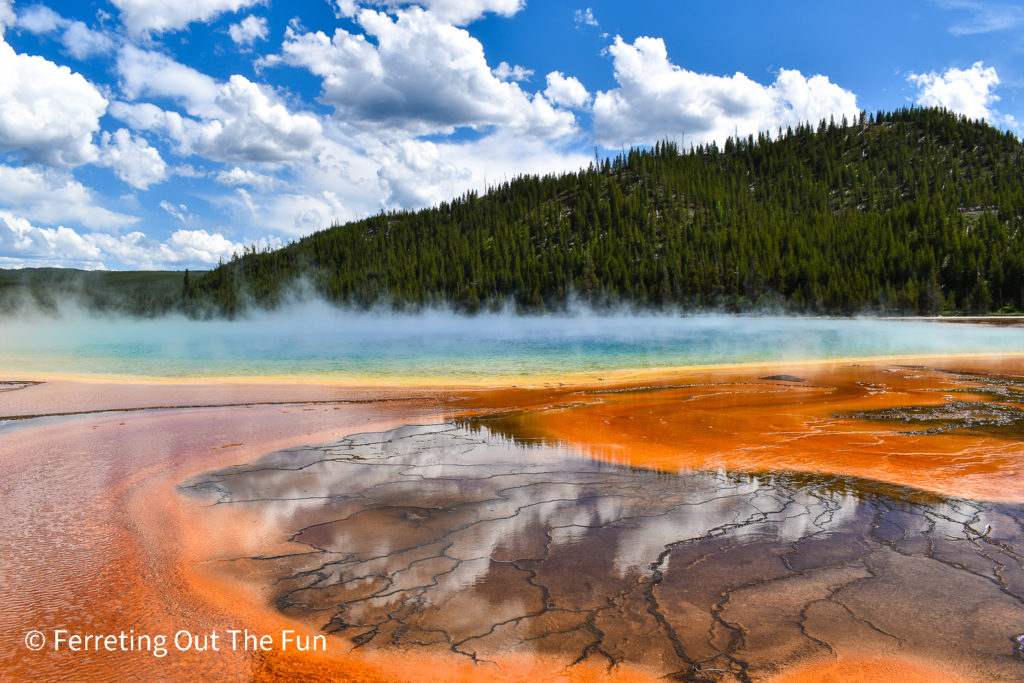
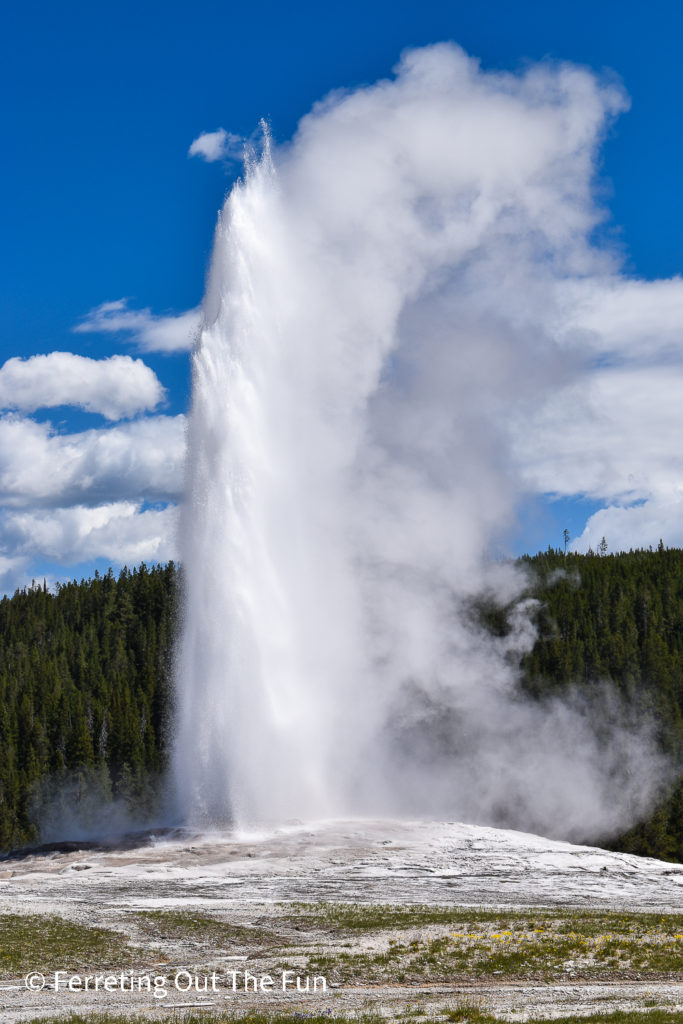
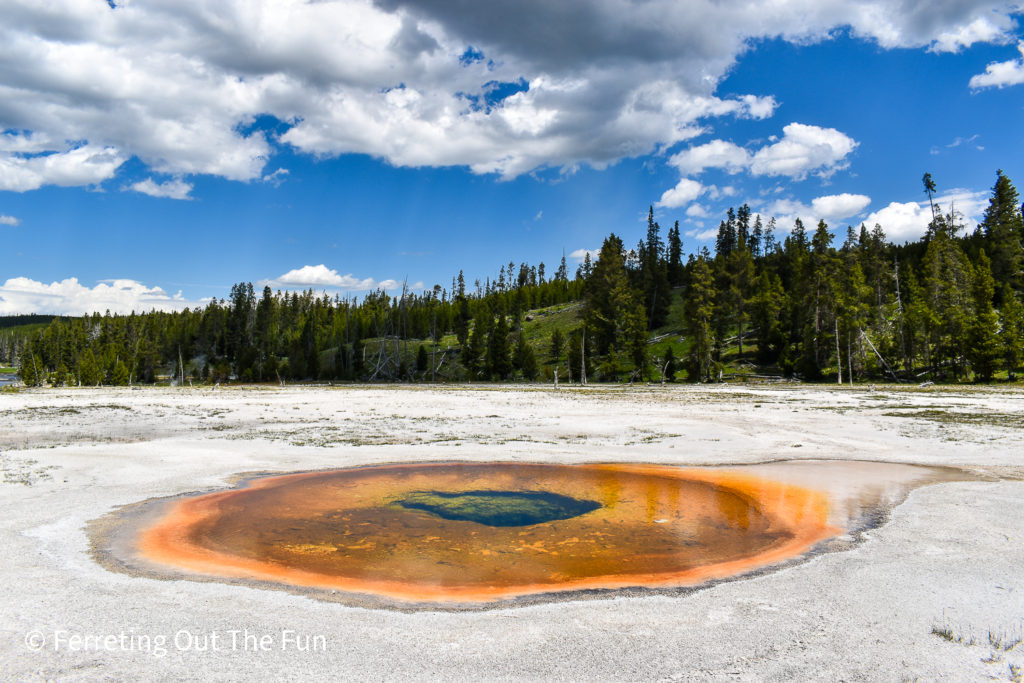
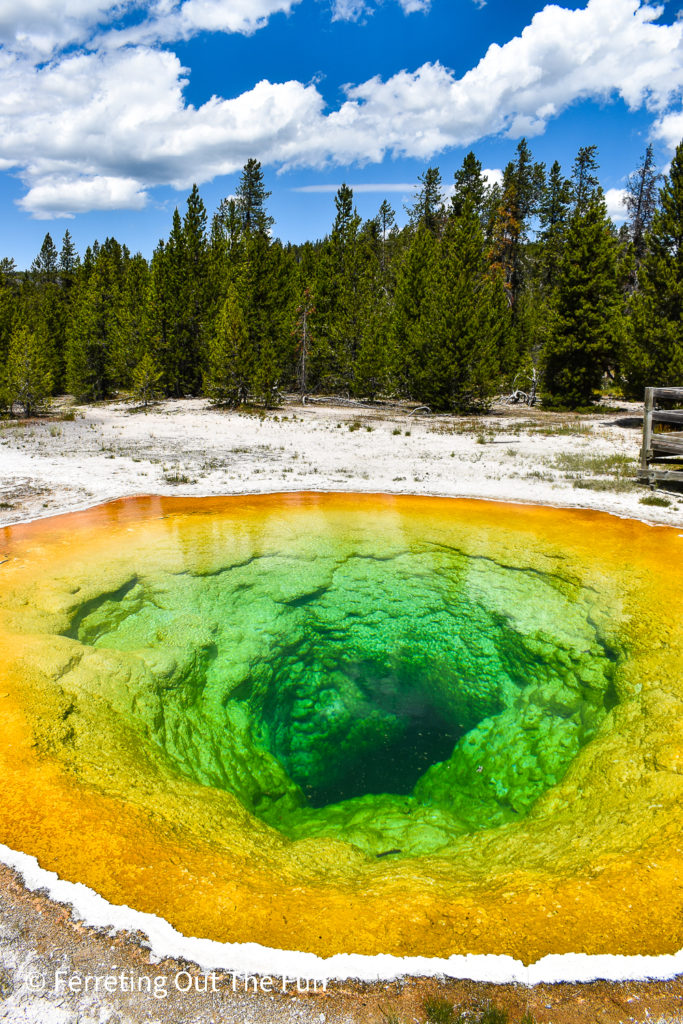
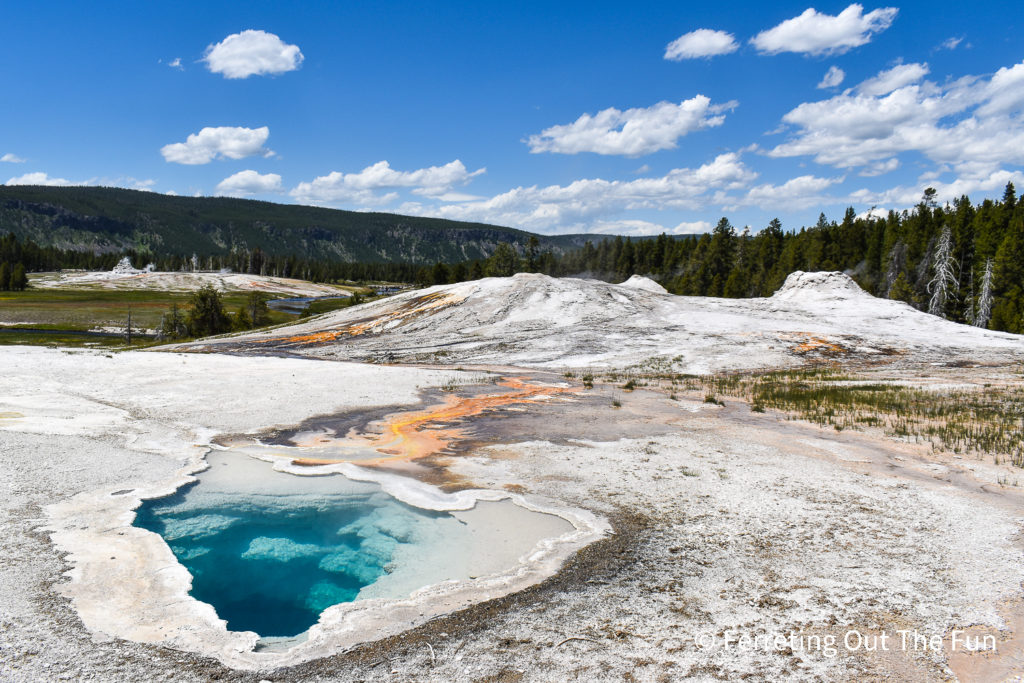
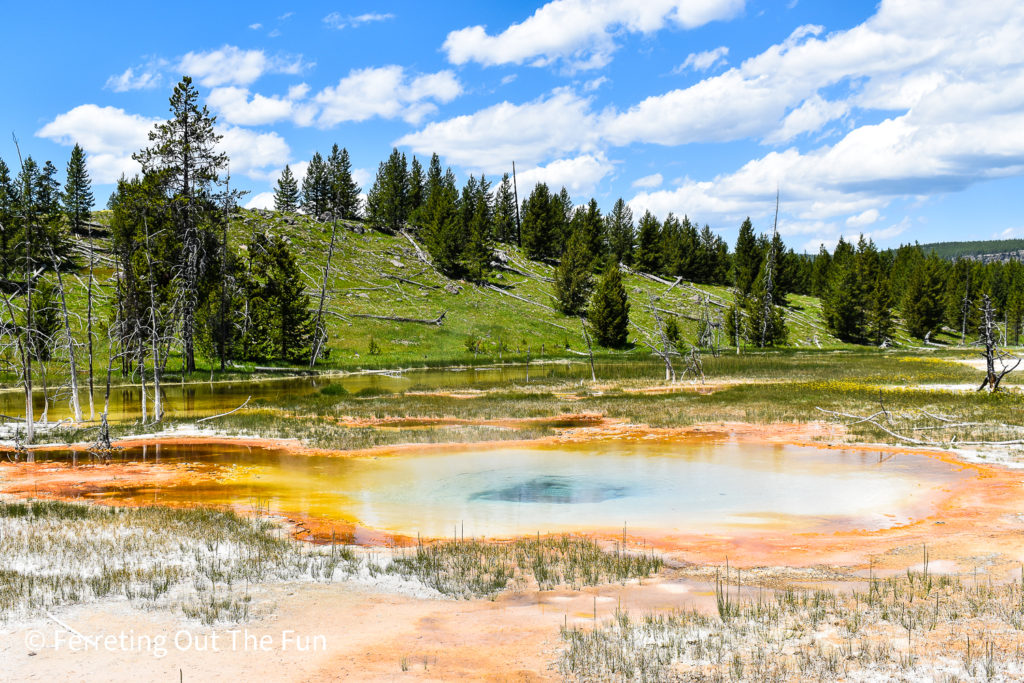
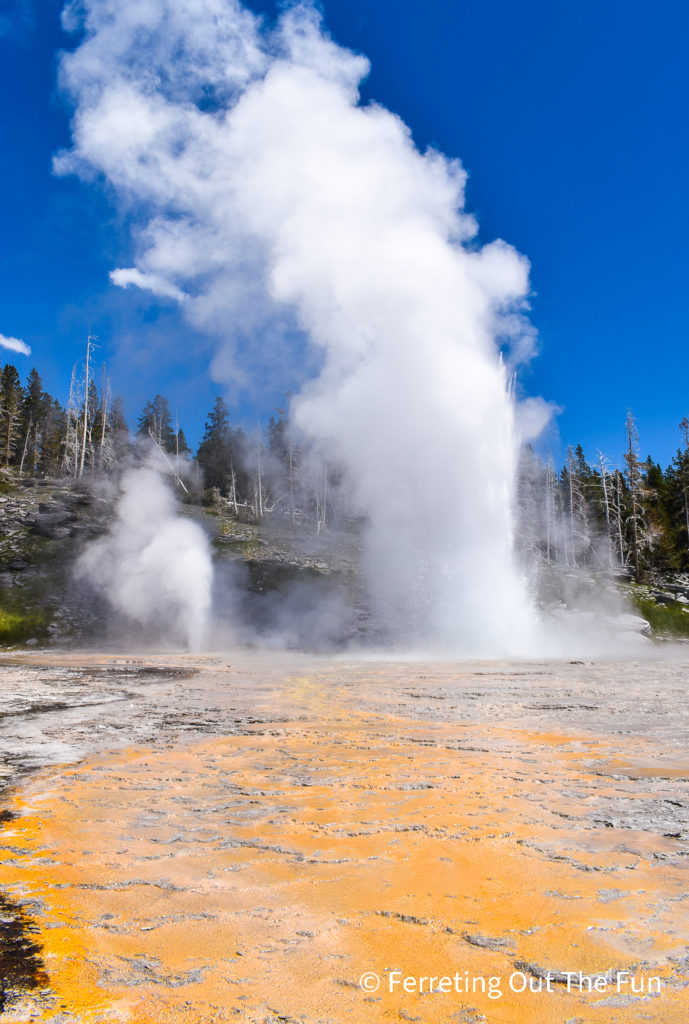
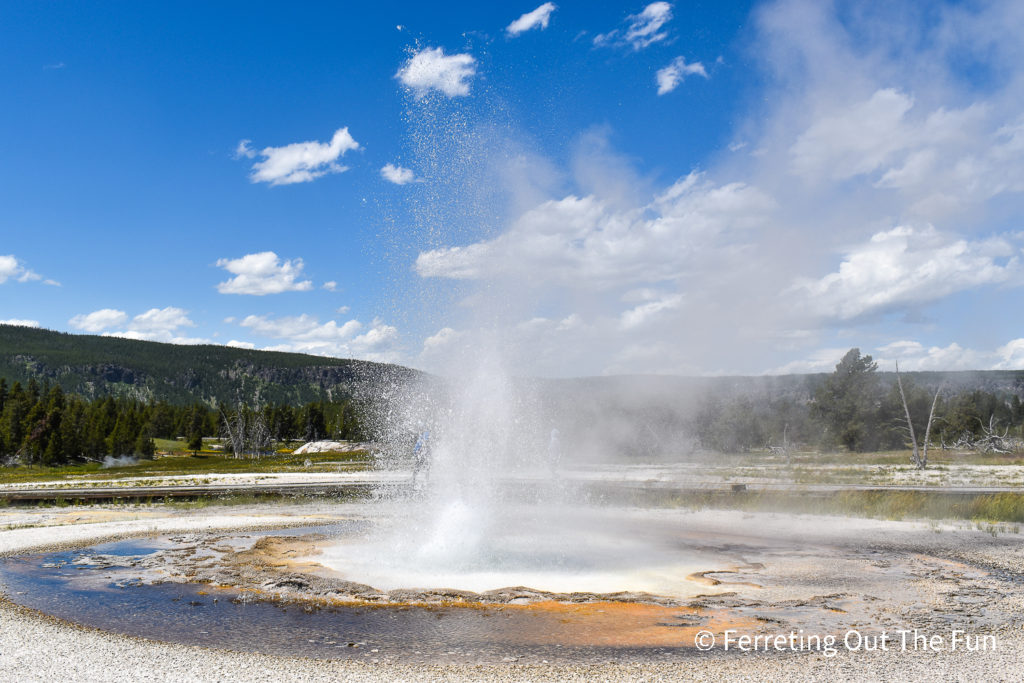
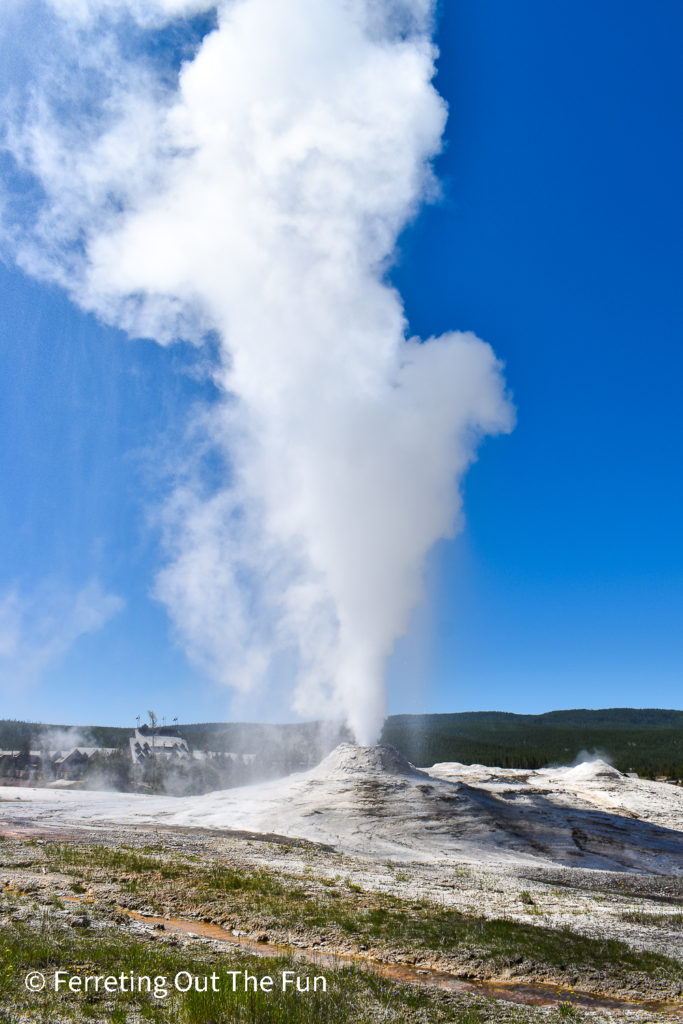
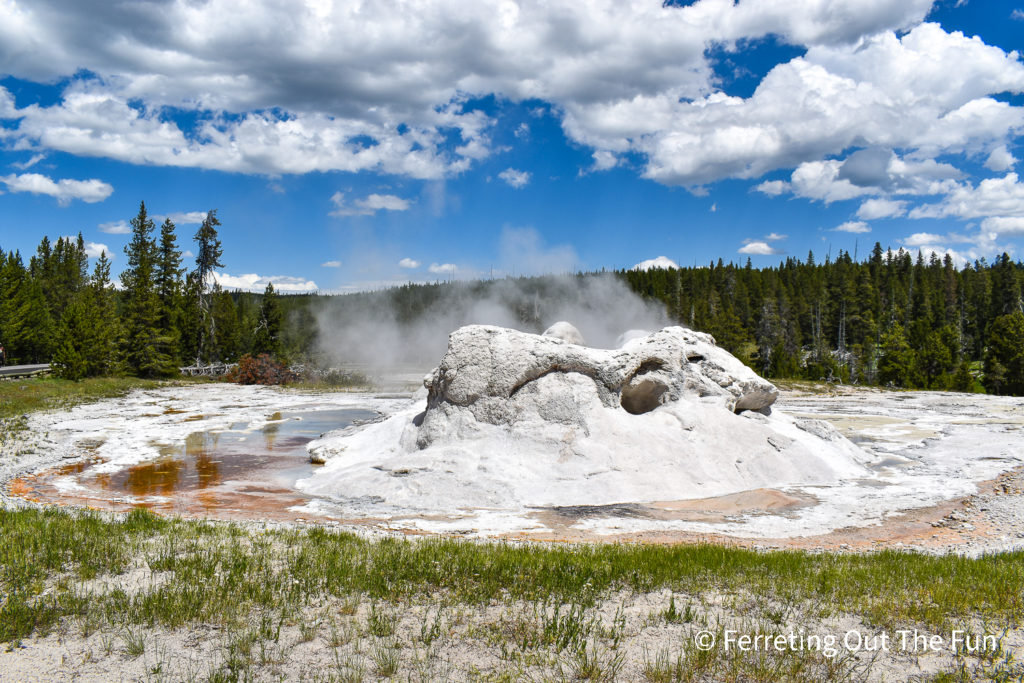
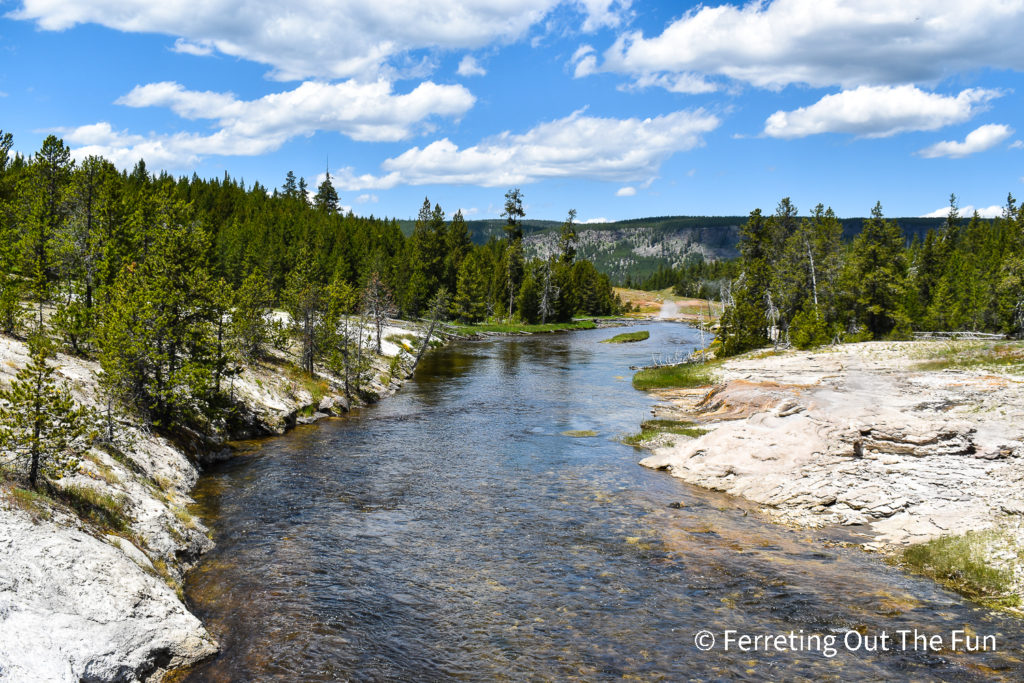
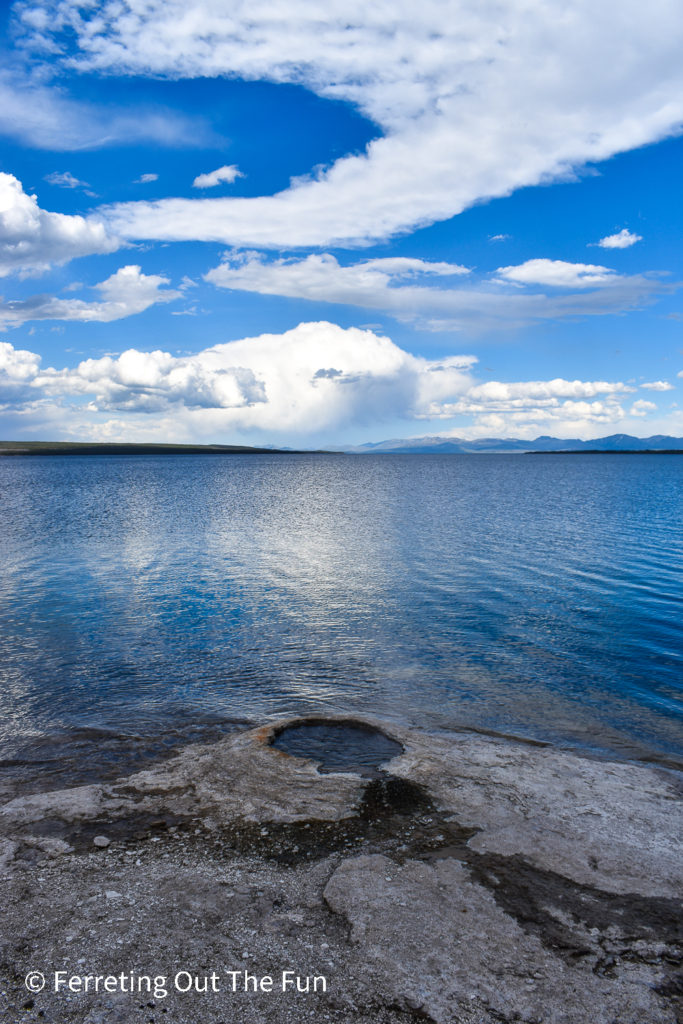
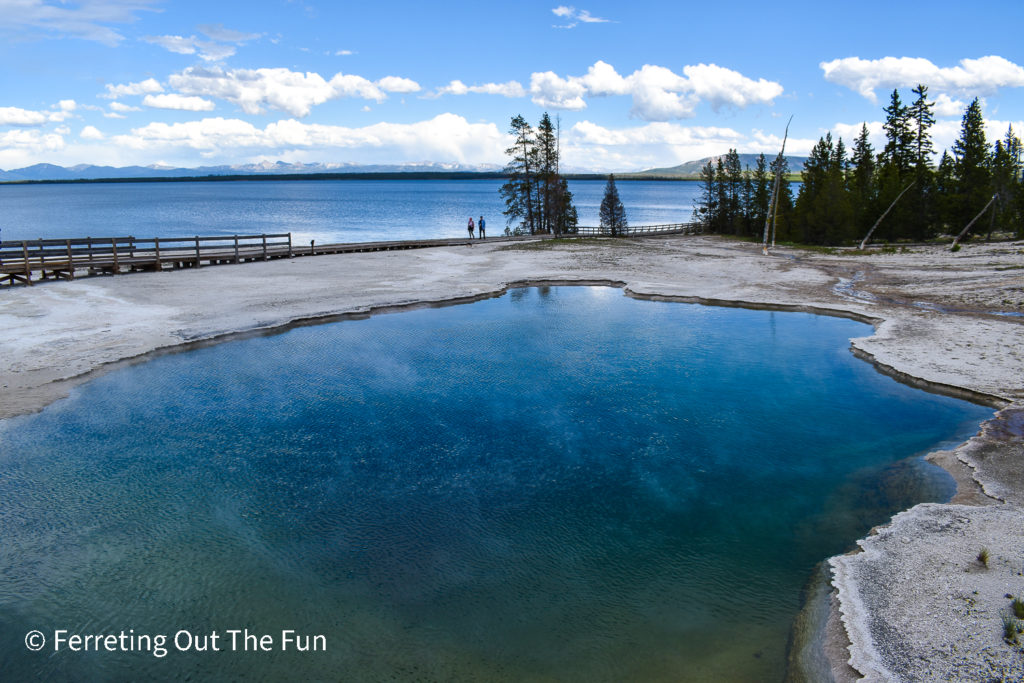
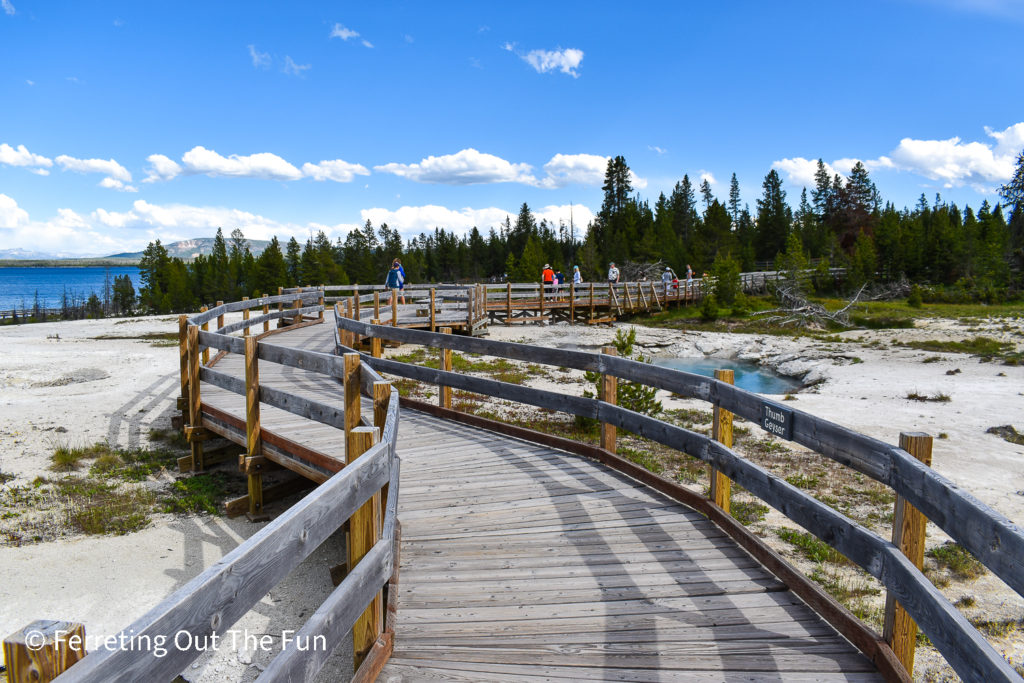
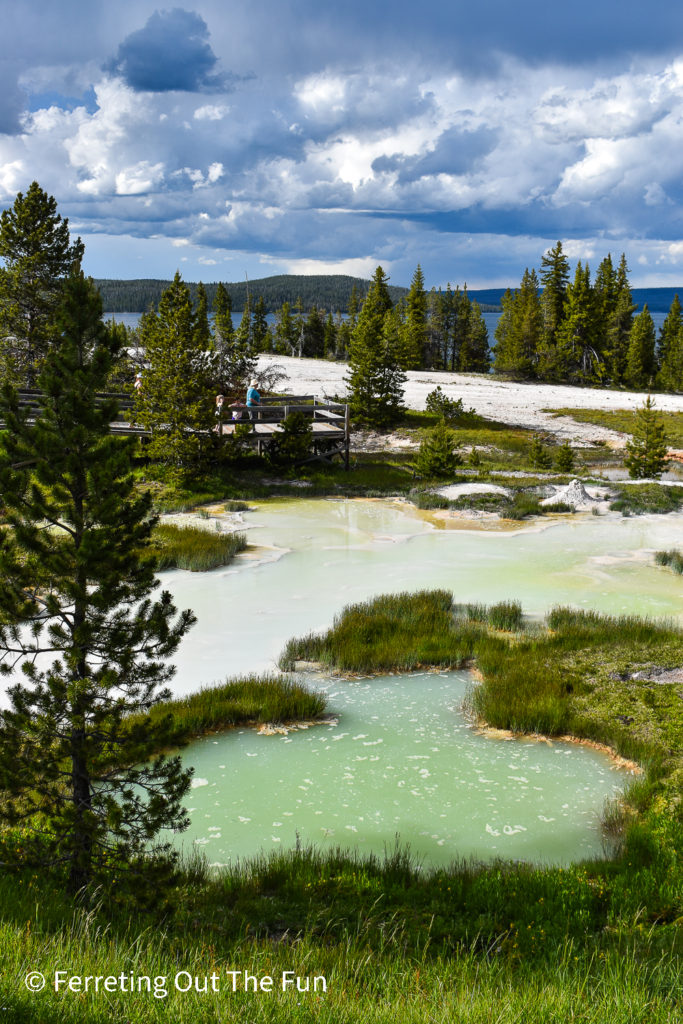
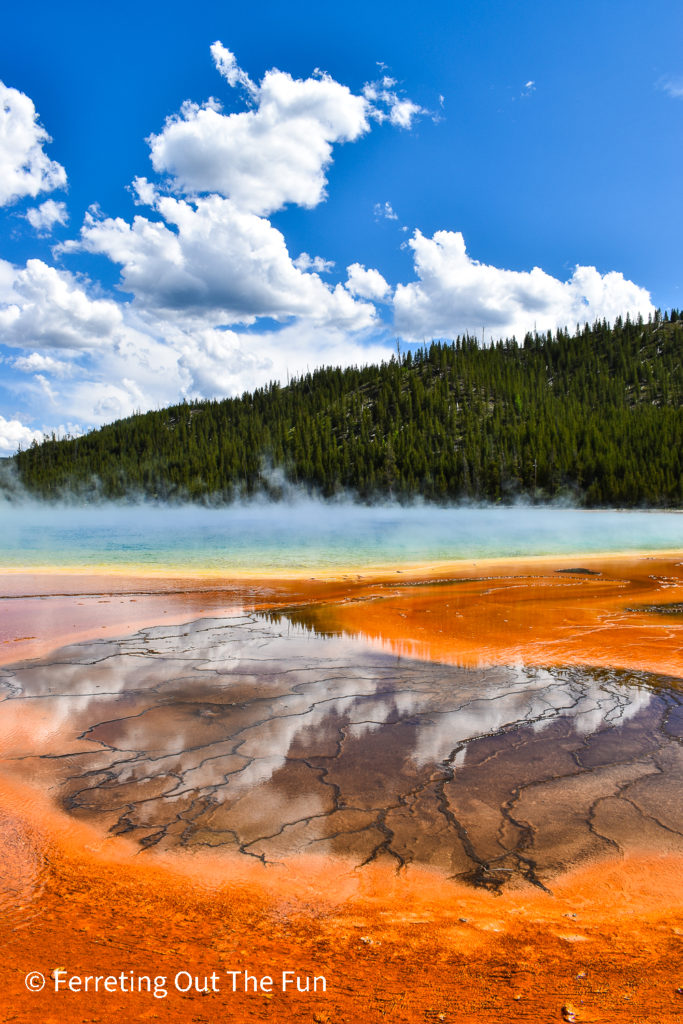
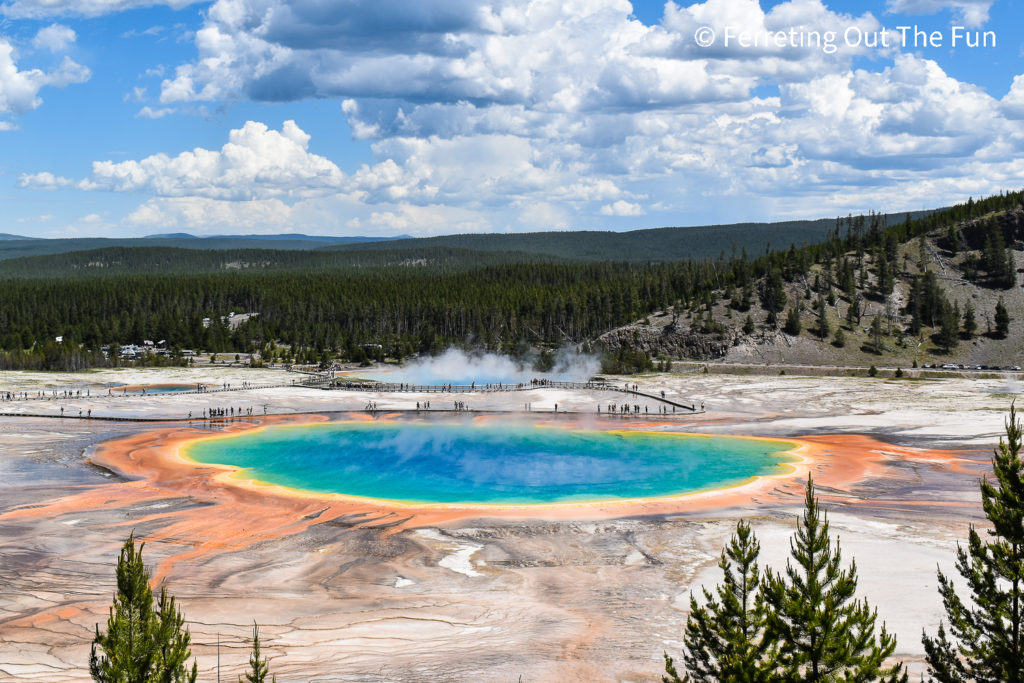
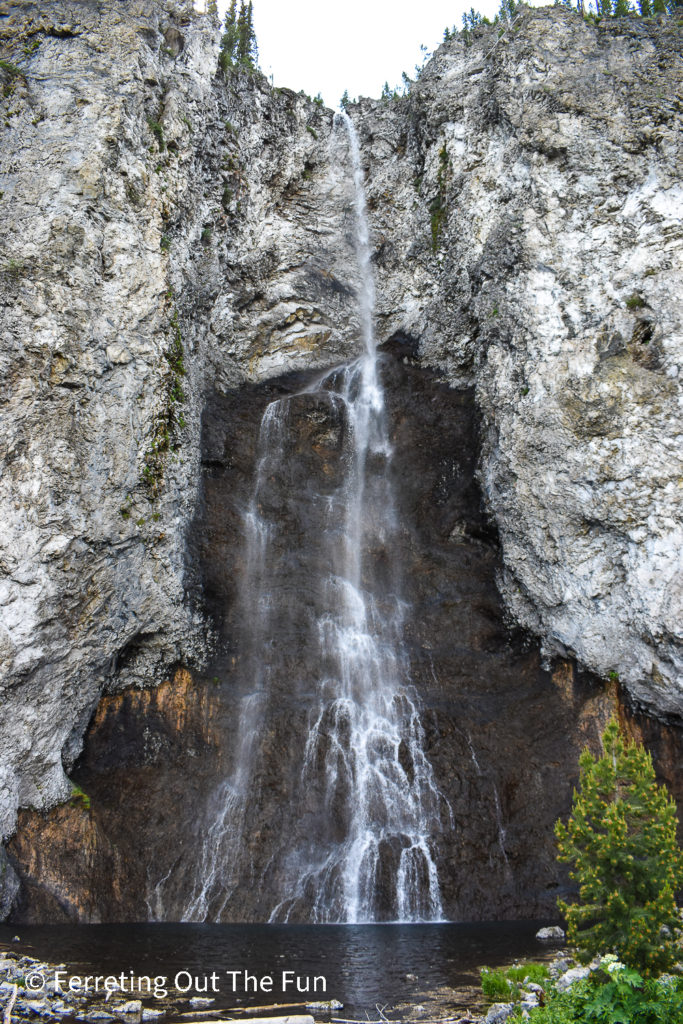
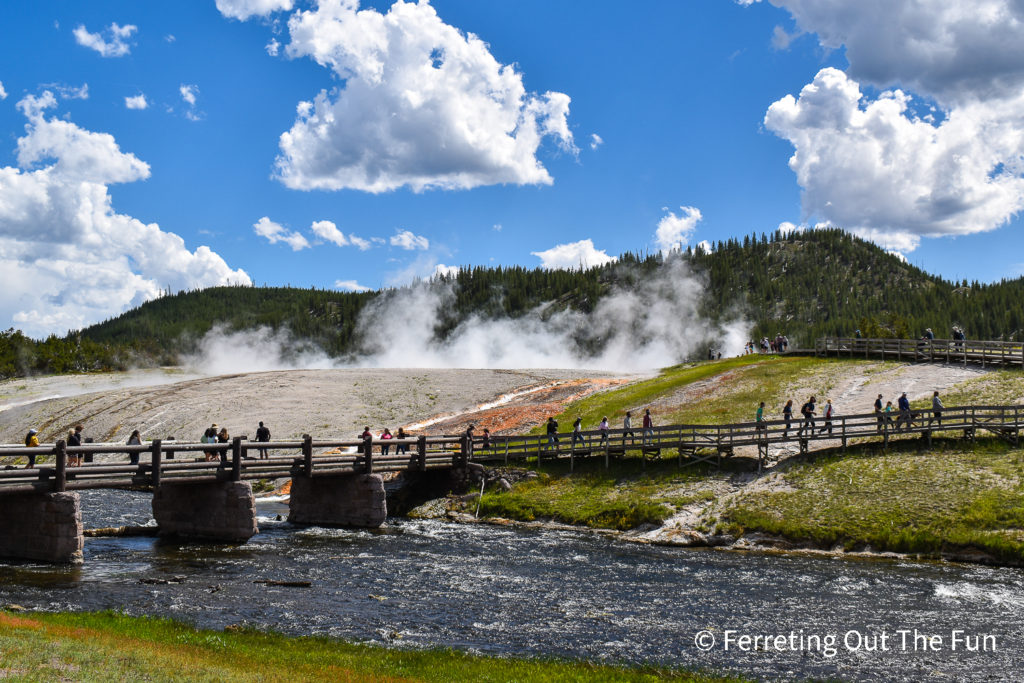
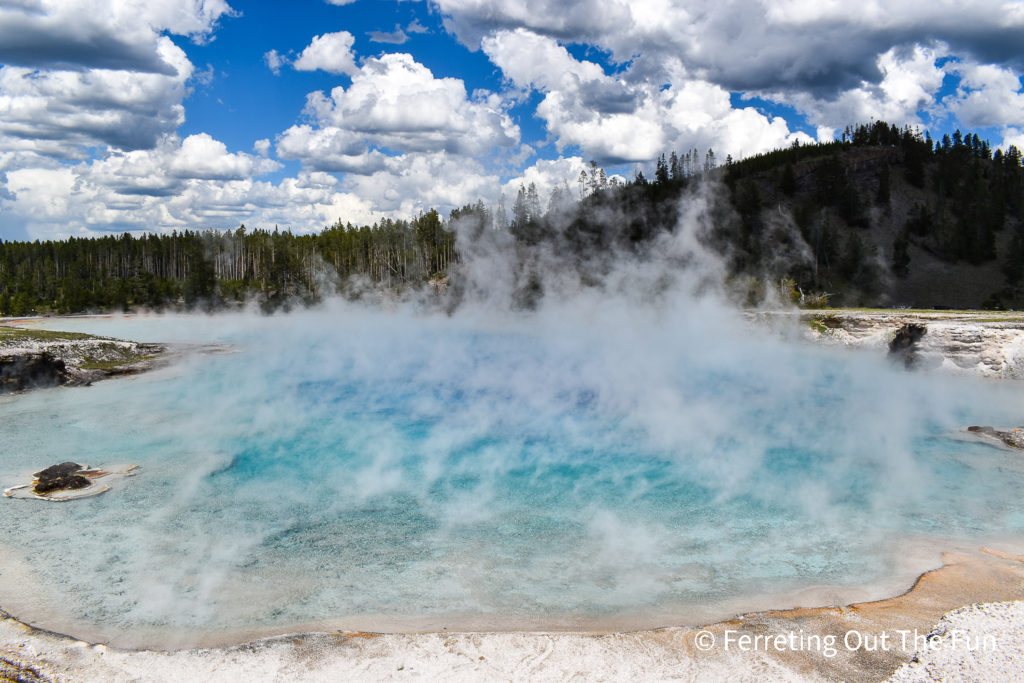
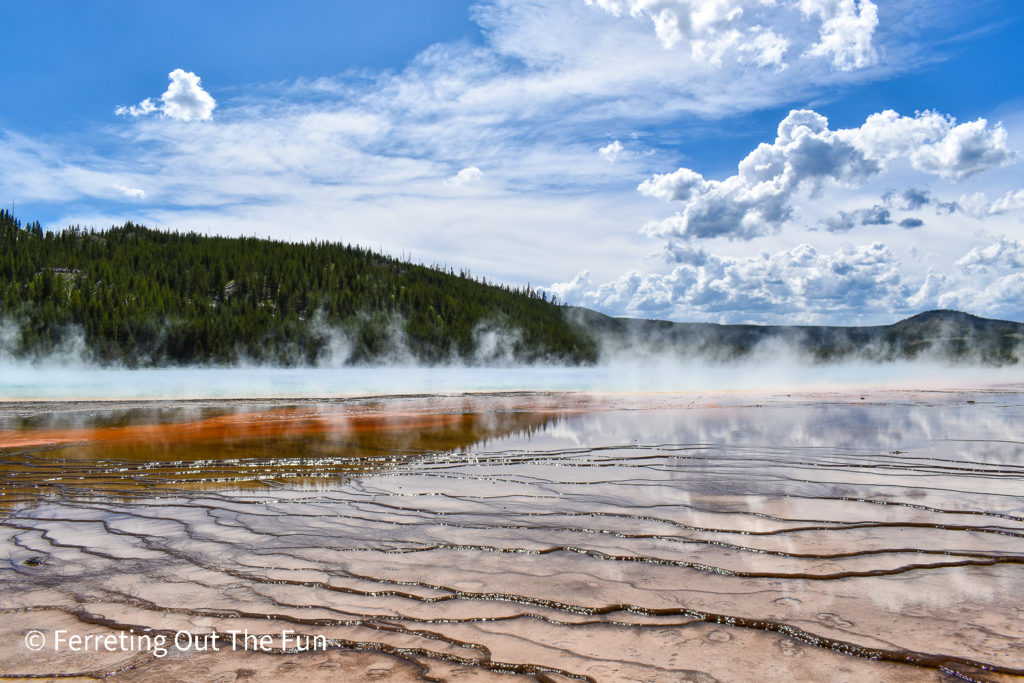
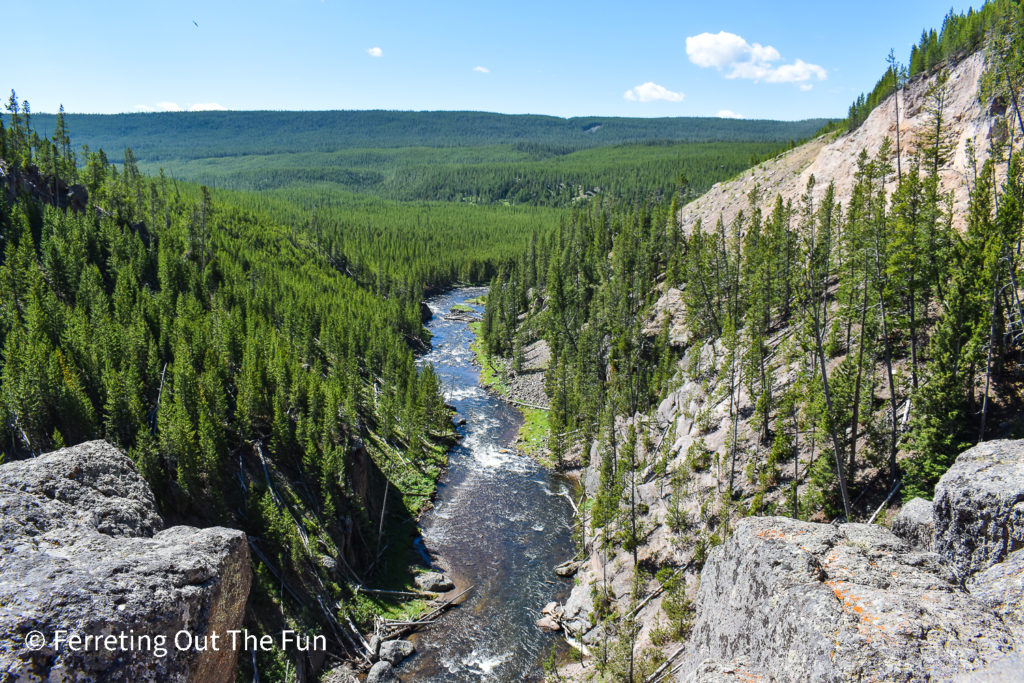
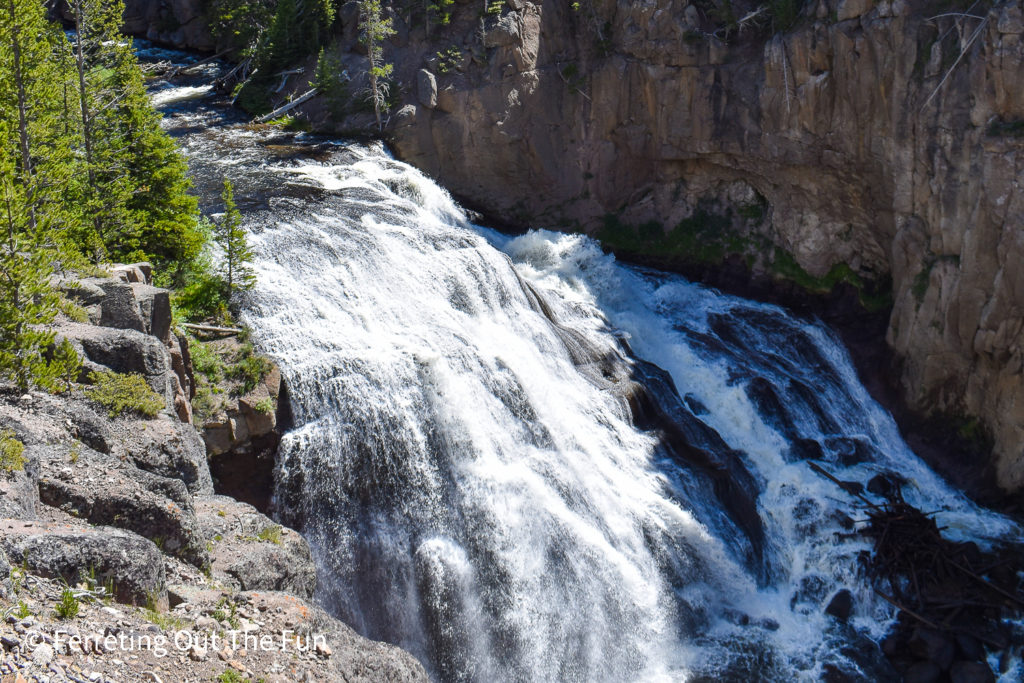
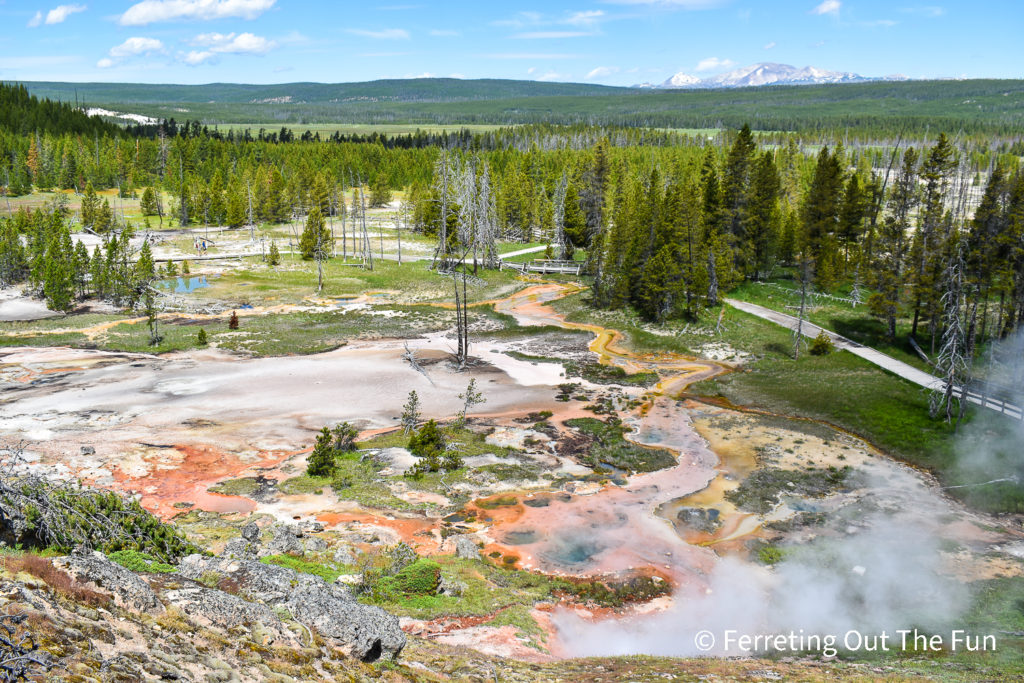
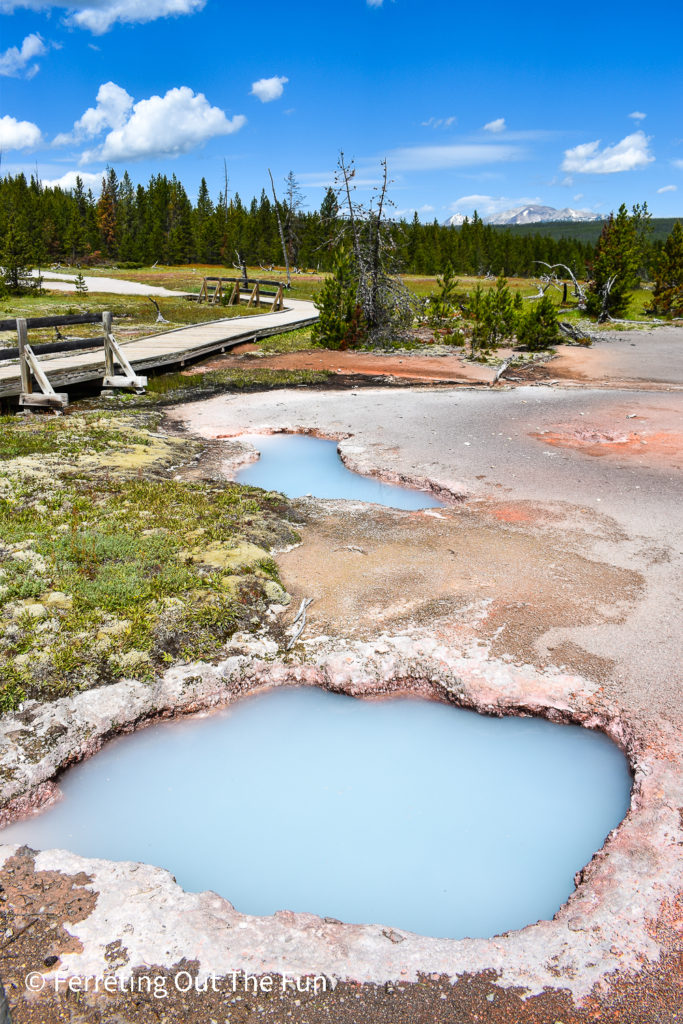
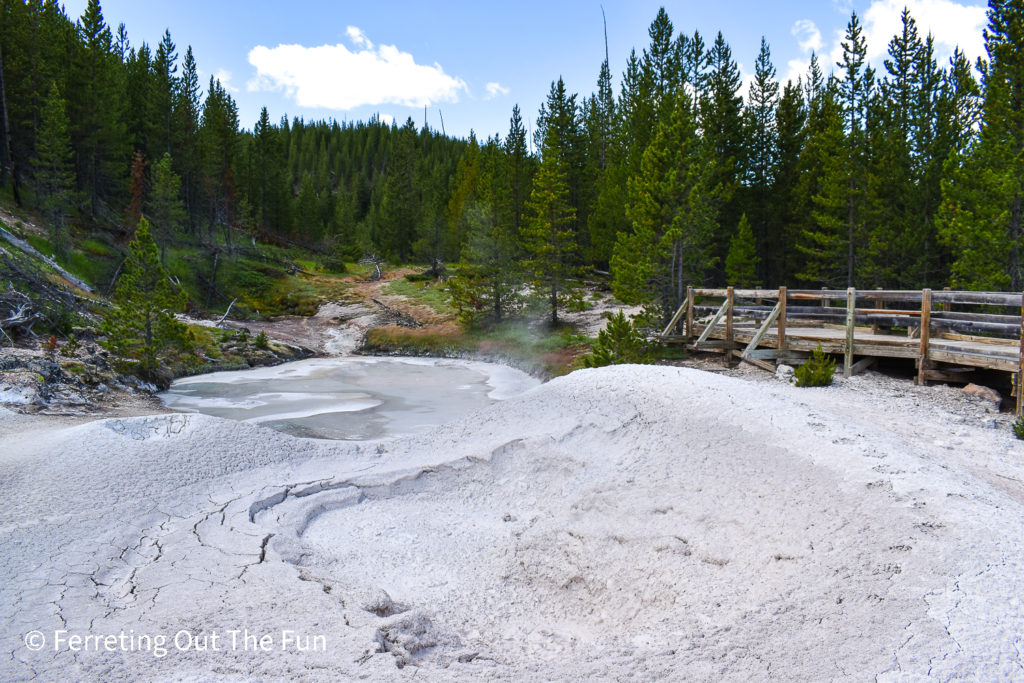
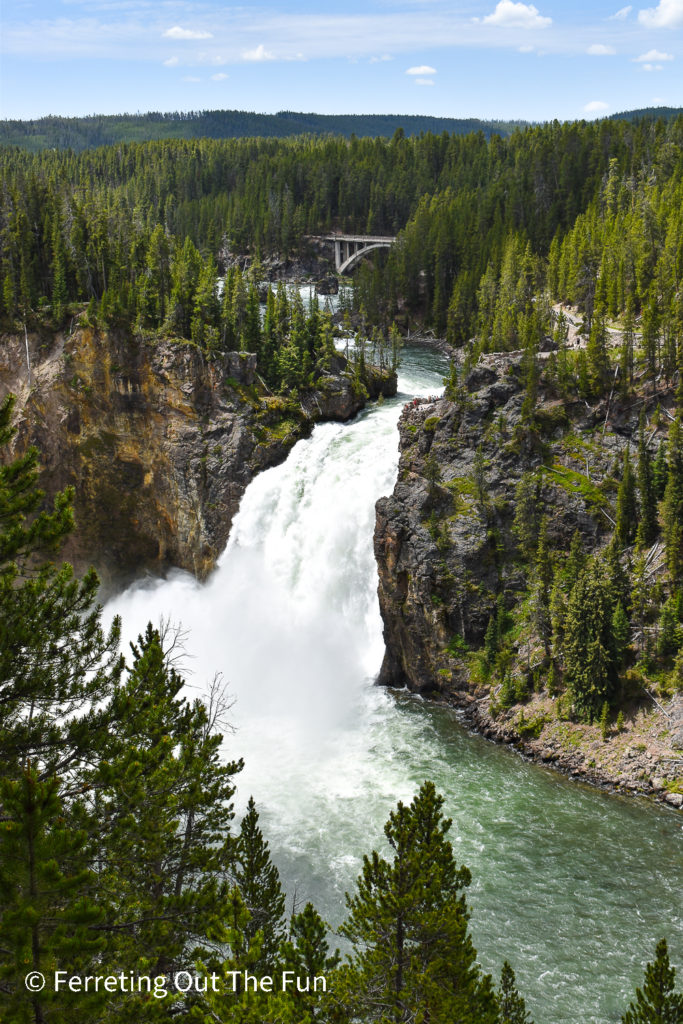
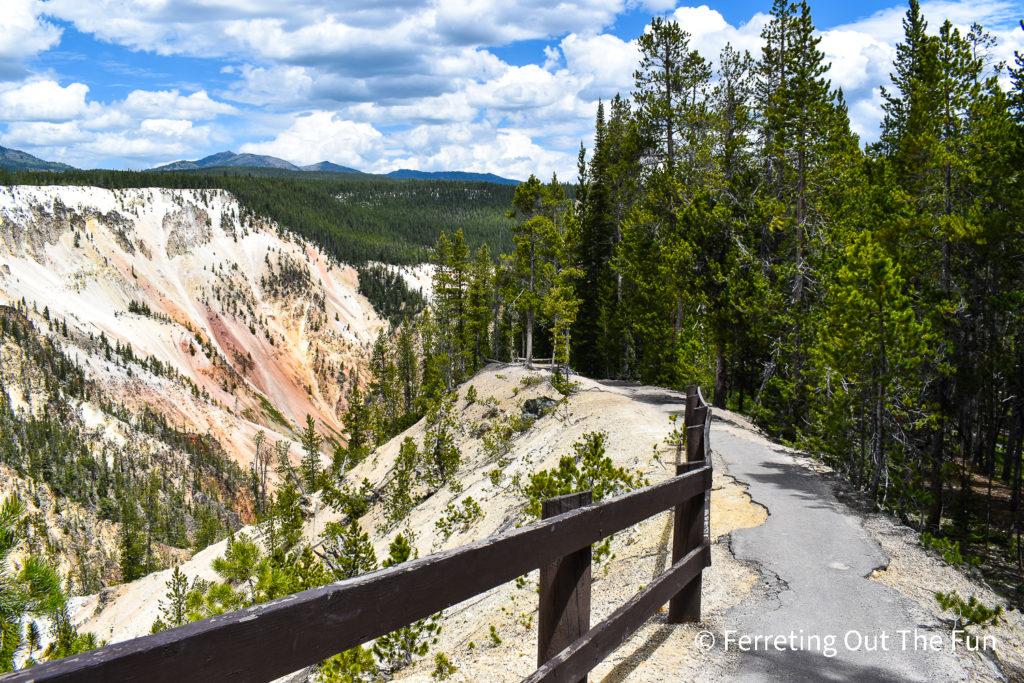
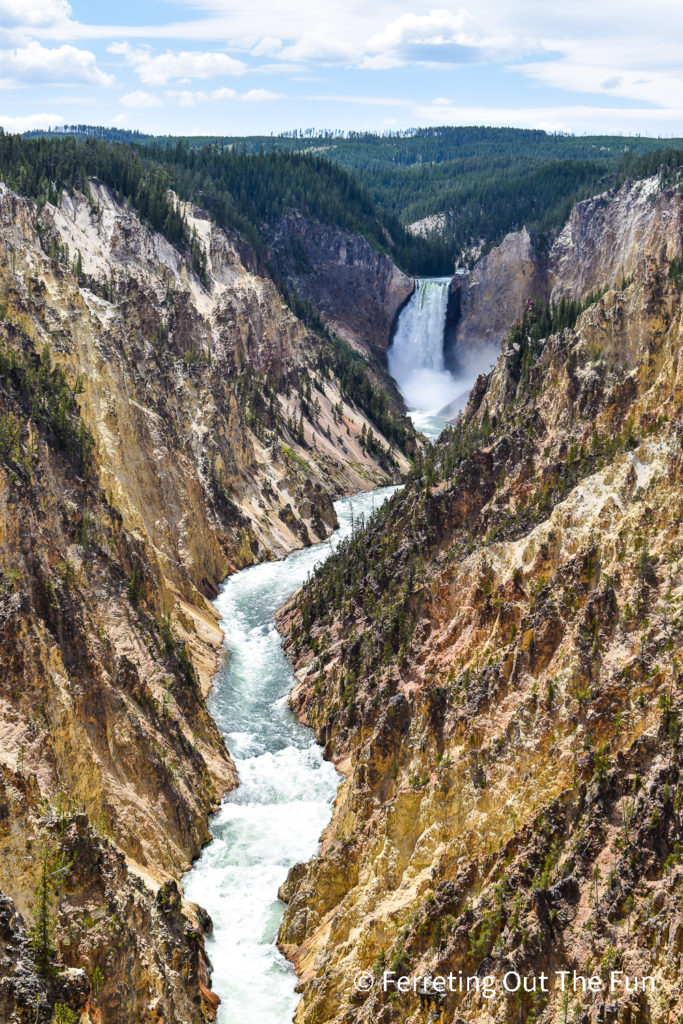
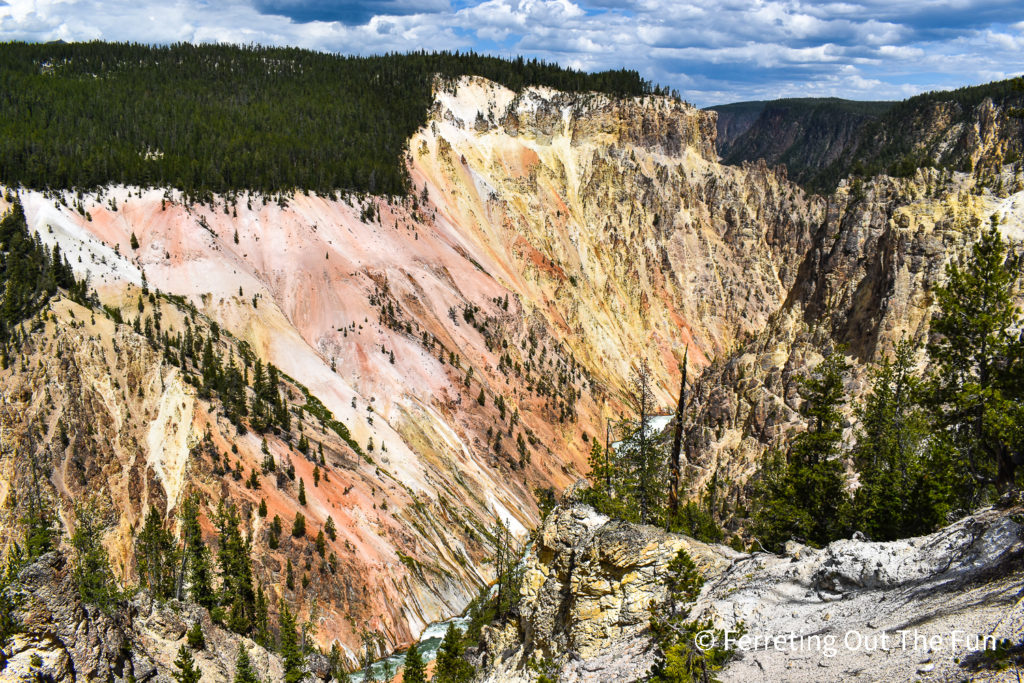
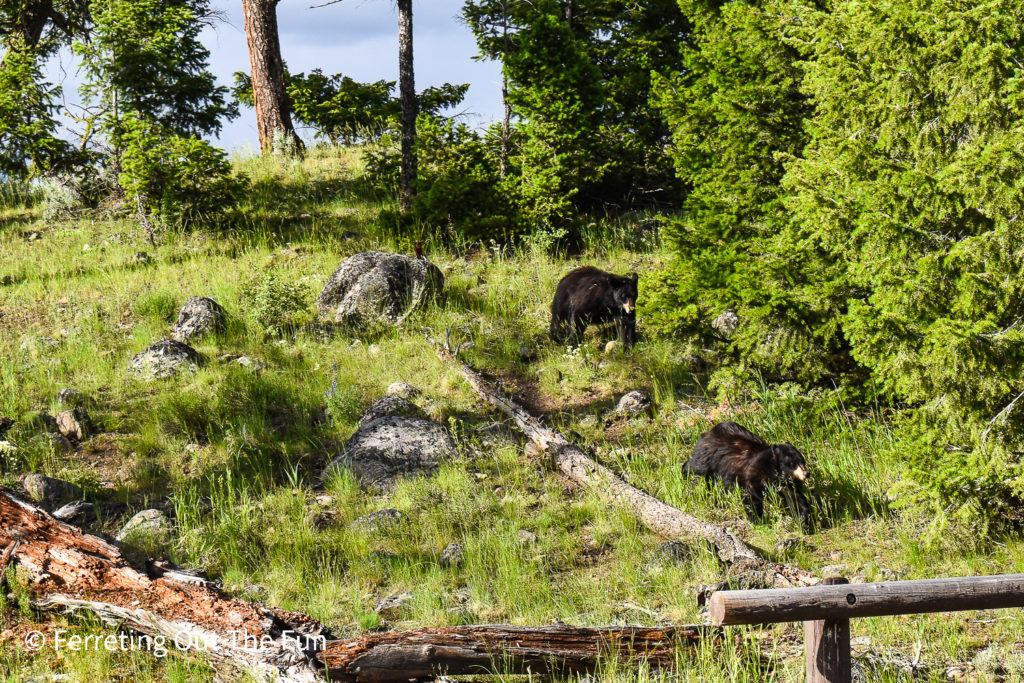
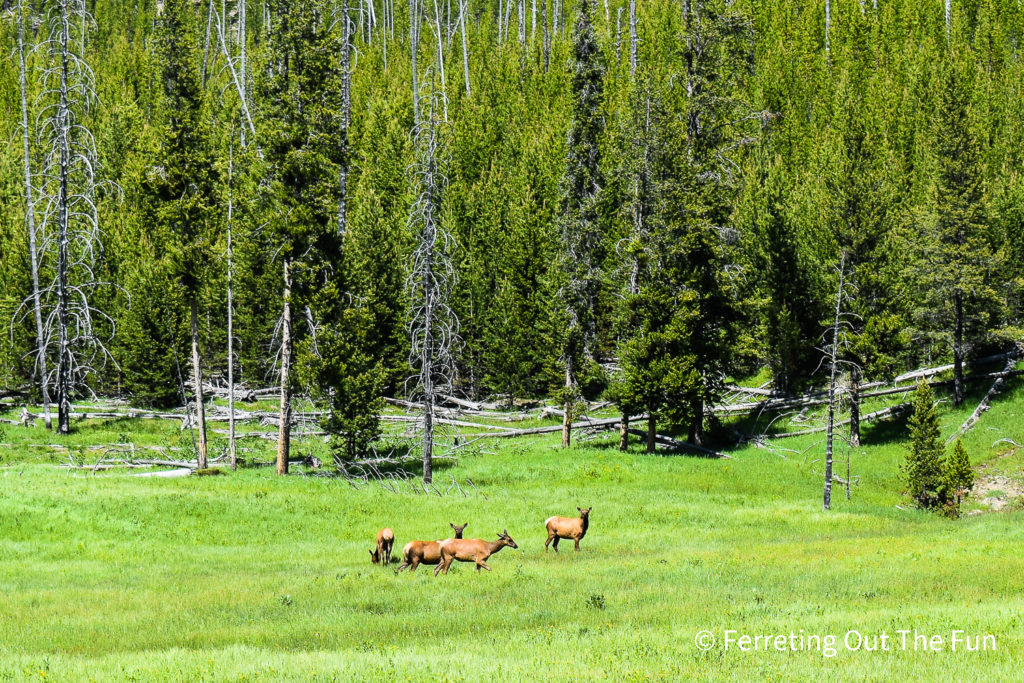
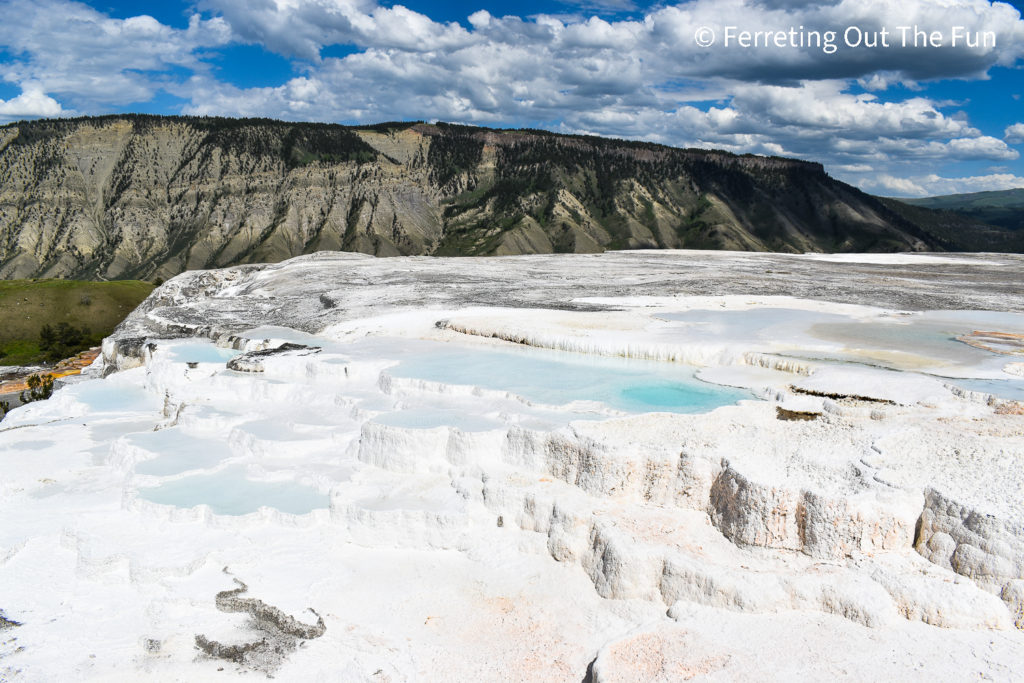
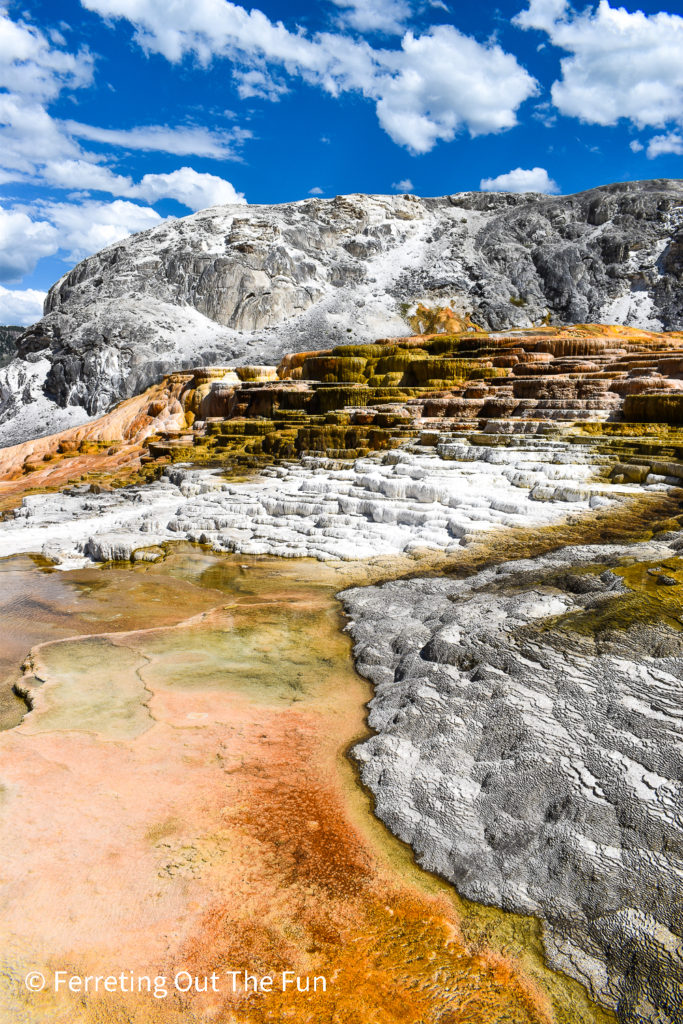
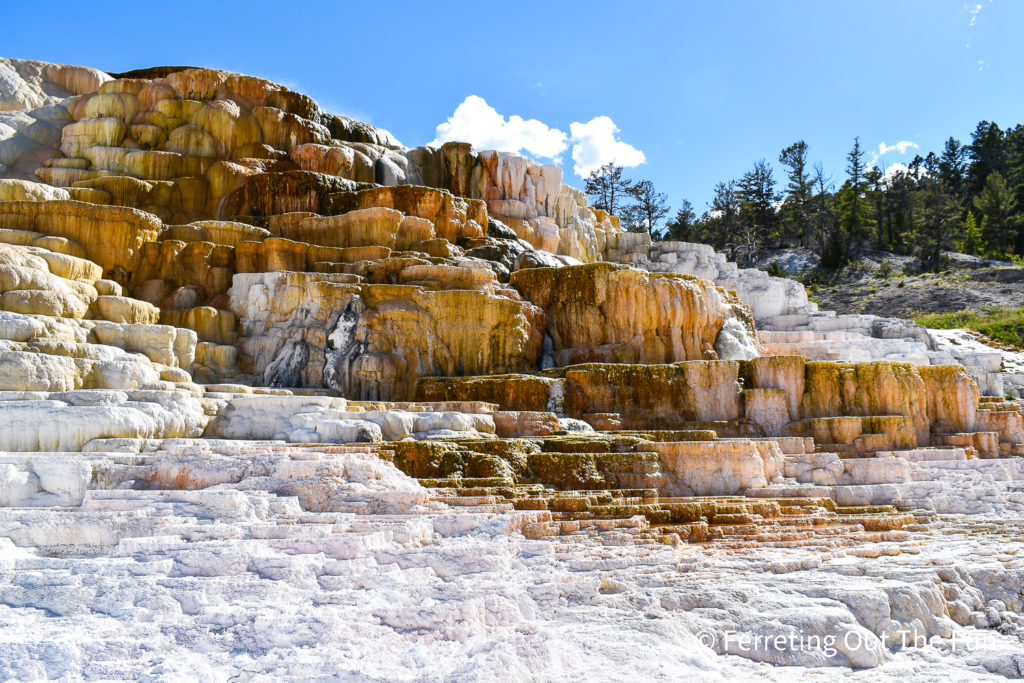
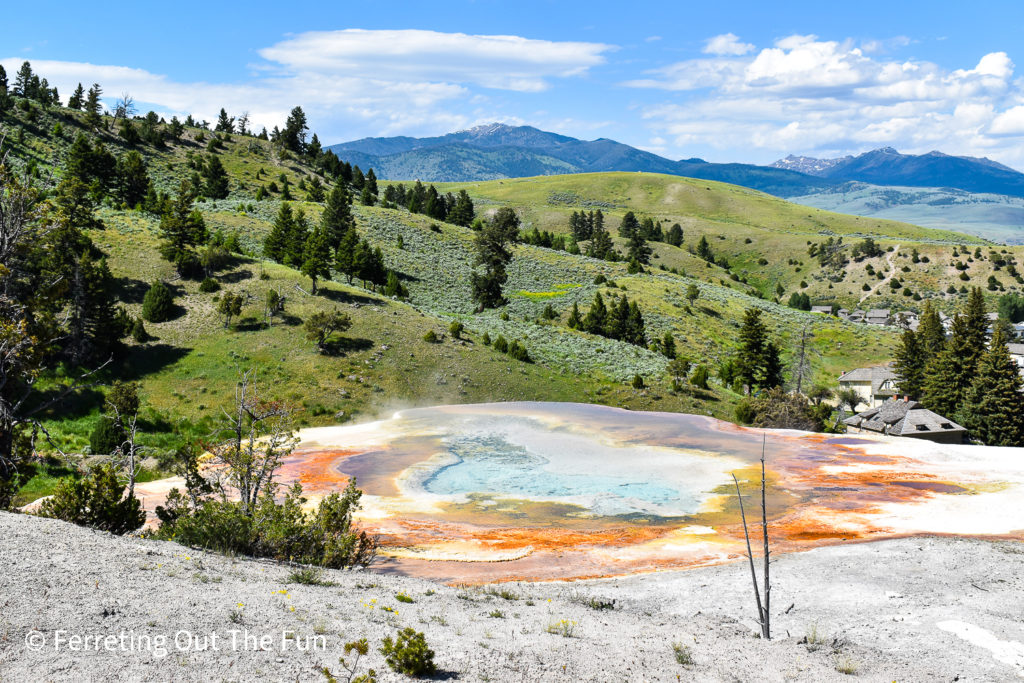
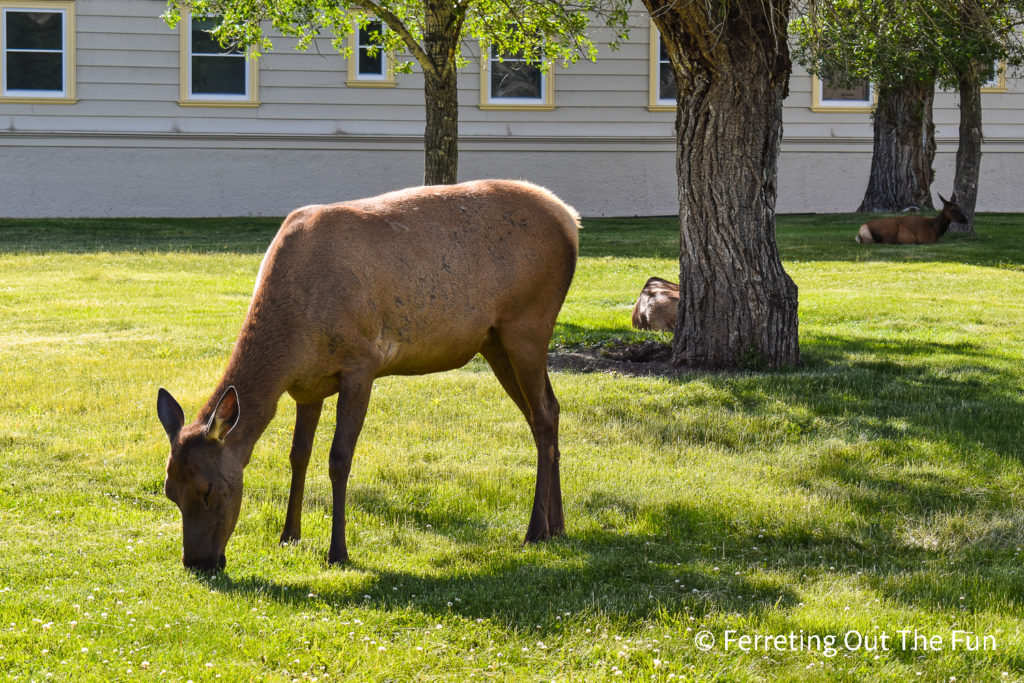
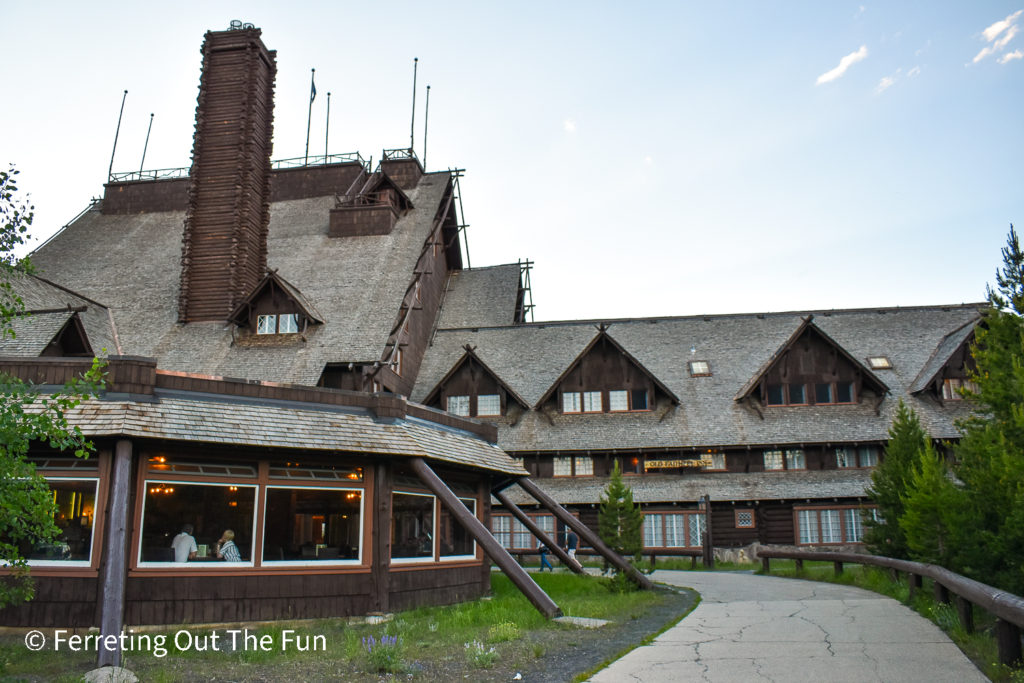
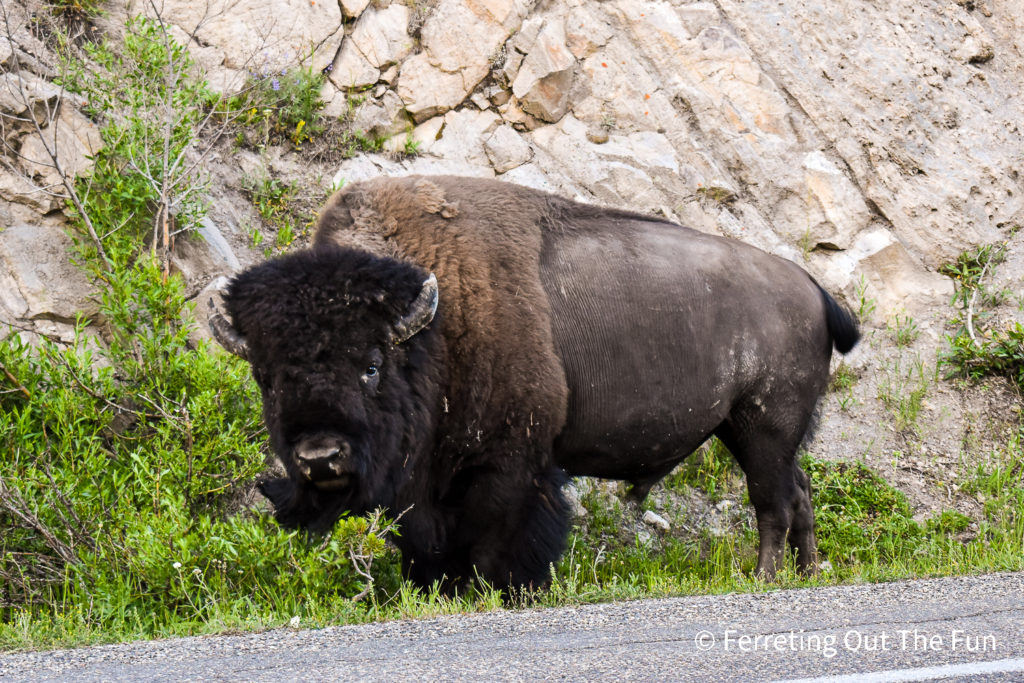
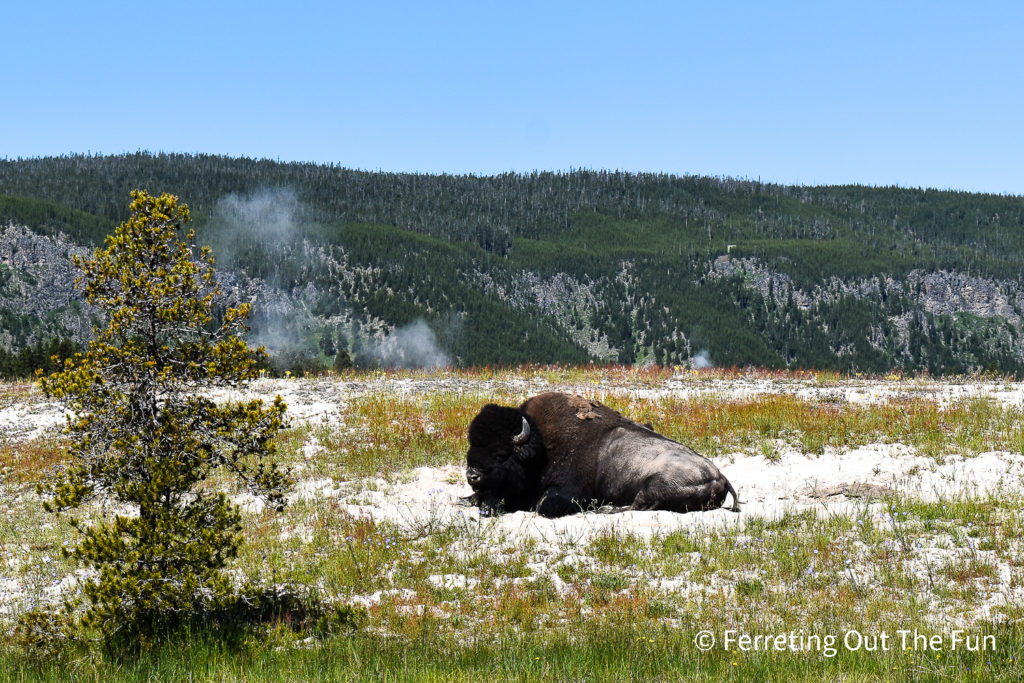
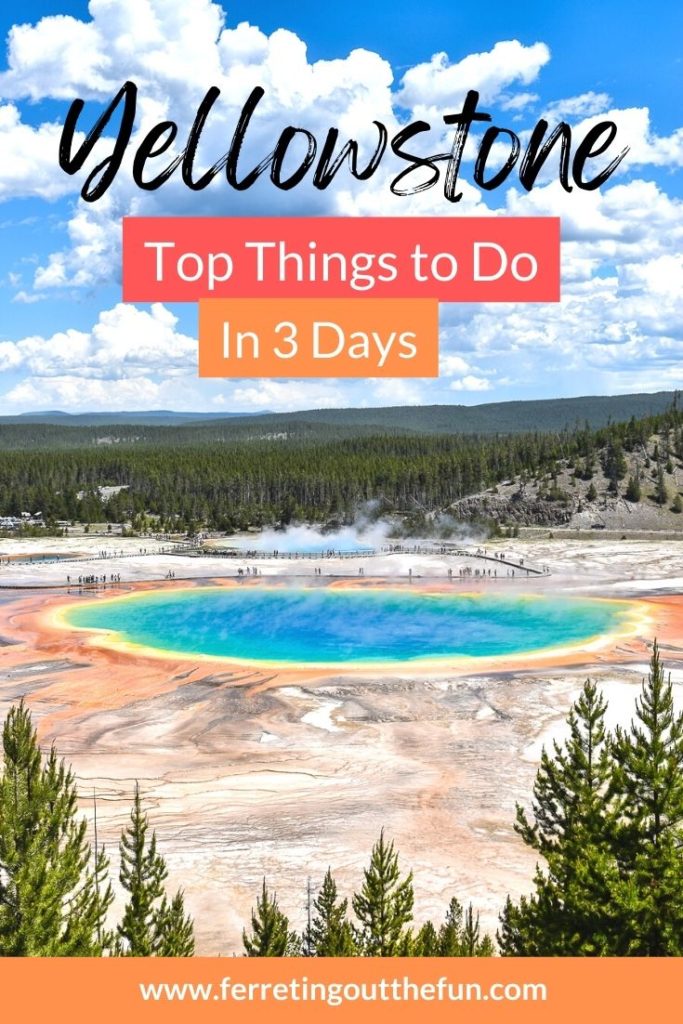
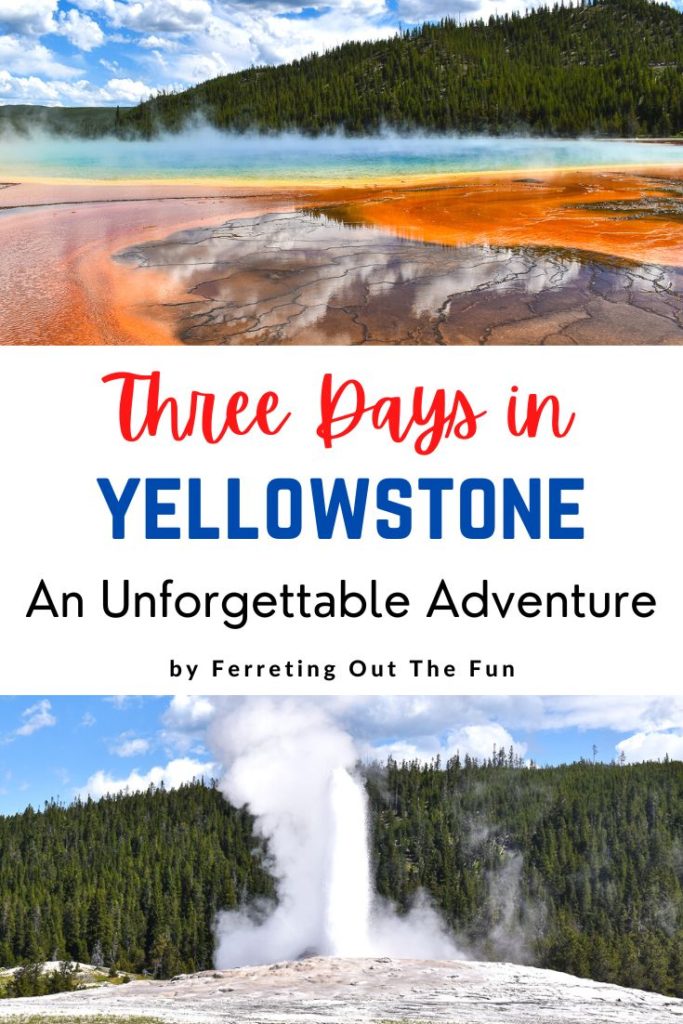
What an awesome trip!! Wish I could have gone with you!! The pictures
were just awesome!! Can’t get over the colors of the different springs.
So glad you got to go!!
Thanks, Mom! You would have loved this scenery!